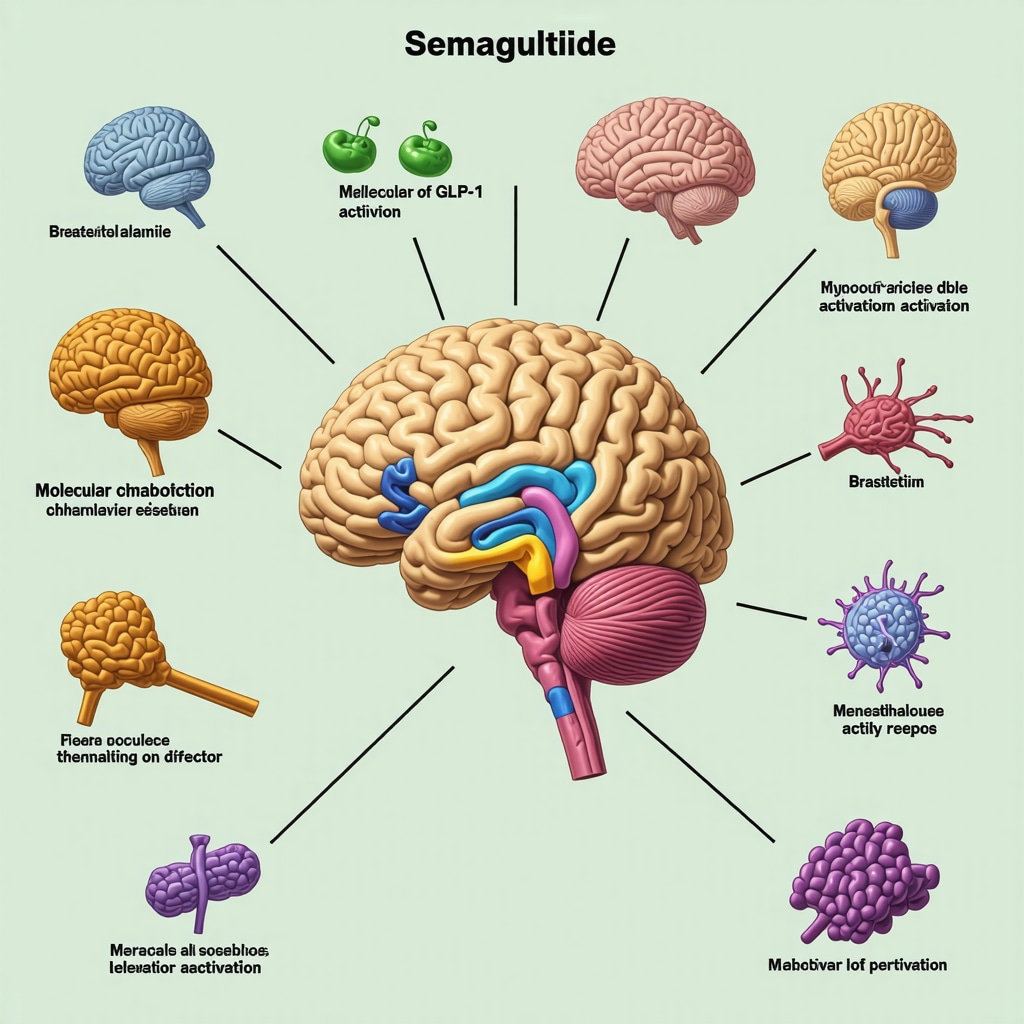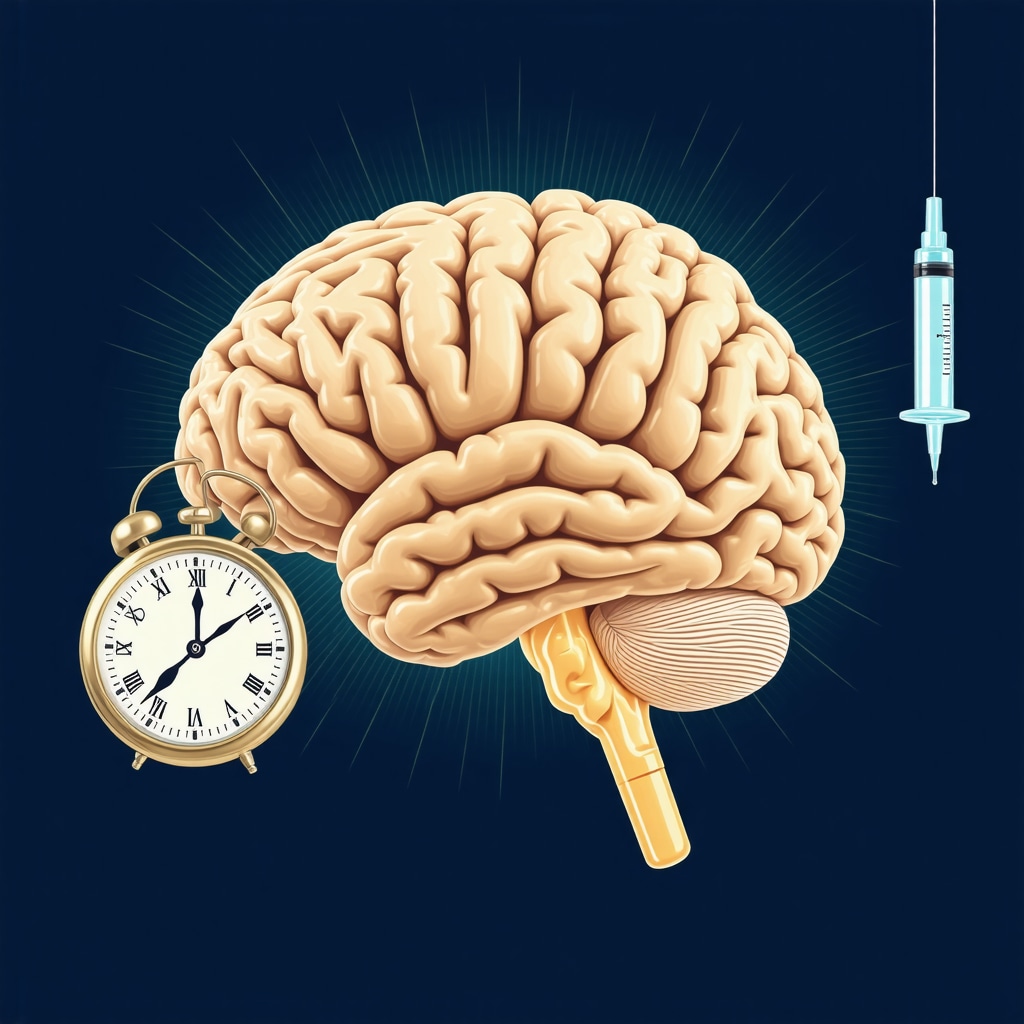Unlocking the Metabolic Potential of Wegovy in Contemporary Fat Loss
In the evolving landscape of obesity management, Wegovy (semaglutide) has emerged as a paradigm-shifting pharmacological agent, significantly enhancing fat loss outcomes when integrated with comprehensive lifestyle adjustments. Its mechanism, centered on GLP-1 receptor agonism, not only modulates appetite but also recalibrates metabolic pathways, thereby providing a multifaceted approach to obesity treatment.
Strategic Nutritional Modifications to Complement Wegovy’s Efficacy
Optimal dietary patterns play a pivotal role in amplifying Wegovy’s fat loss effects. Research indicates that balancing macronutrient intake—favoring high-protein and fiber-rich meals—augments satiety and stabilizes glycemic response, crucial for sustained weight reduction. Adopting meal plans that progressively adjust caloric intake aligns with the drug’s appetite-suppressing properties, preventing metabolic adaptation and supporting consistent fat loss. For tailored dietary strategies, see adjusting meal plans for success with Wegovy.
Optimizing Injection Timing and Adherence: The Pharmacokinetic Edge
Adherence to precise injection timing enhances drug plasma concentration consistency, which is critical for Wegovy’s therapeutic impact. Clinical pharmacokinetics suggest that consistent weekly dosing at the same time of day reduces variability in receptor activation, thereby maintaining appetite suppression and metabolic benefits. Patients are advised to monitor dosing schedules meticulously, as detailed in guides on injection timing consistency.
How Can Patients Navigate Common Gastrointestinal Side Effects Without Compromising Fat Loss?
Gastrointestinal discomfort, notably nausea and delayed gastric emptying, is a frequently reported barrier during Wegovy initiation. Expert protocols recommend gradual dose escalation coupled with dietary adjustments—such as smaller, more frequent meals and hydration optimization—to mitigate these effects. These strategies preserve adherence and ensure continuous fat loss momentum. Comprehensive side effect management techniques are elaborated in natural approaches to combat semaglutide side effects.
Integrating Behavioral and Physical Activity Interventions for Synergistic Outcomes
While Wegovy significantly attenuates appetite, its fat loss benefits are maximized when paired with structured physical activity and behavioral modification. Exercise regimens emphasizing both resistance and aerobic components enhance lean mass preservation and metabolic rate, preventing common pitfalls such as muscle loss during caloric deficits. Moreover, cognitive-behavioral strategies targeting emotional eating and stress reduction further consolidate weight management gains, as advocated in expert advice on overcoming emotional eating.
The Future of Wegovy Optimization: Personalized Medicine and Monitoring
Emerging evidence underscores the value of personalized dosing and ongoing metabolic monitoring to sustain long-term fat loss success with Wegovy. Regular clinical assessments, including body composition analyses and laboratory evaluations, enable dynamic treatment adjustments tailored to individual physiological responses. This precision medicine approach mitigates plateaus and enhances safety, aligning with best practices in medically supervised weight loss monitoring.
For those seeking to deepen their understanding and share clinical experiences with Wegovy, consider contributing to expert forums or exploring comprehensive guides like science-based weight loss strategies with Wegovy.
According to a 2023 publication in The New England Journal of Medicine, integrating pharmacotherapy with behavioral and nutritional interventions yields superior long-term outcomes in obesity treatment, emphasizing a multidisciplinary approach to maximize the benefits of agents like semaglutide (NEJM – Semaglutide for Weight Management).
Enhancing Psychological Resilience During Wegovy Treatment
Psychological resilience plays a crucial role in sustaining weight loss efforts when using Wegovy. Patients often face emotional and behavioral challenges such as cravings, mood fluctuations, and stress-induced eating. Integrating mindfulness techniques and cognitive behavioral therapy (CBT) into treatment regimens can help patients manage these psychological hurdles effectively. This dual approach not only supports adherence to medication but also fosters healthier relationships with food and body image, enhancing the long-term sustainability of fat loss.
Leveraging Gut Microbiome Modulation to Complement Semaglutide Therapy
Recent studies suggest that gut microbiota composition significantly influences metabolic health and weight regulation. Semaglutide’s effects on slowing gastric emptying and altering nutrient absorption may indirectly impact the gut microbiome. Combining Wegovy therapy with prebiotic and probiotic interventions could potentiate fat loss by promoting beneficial bacterial strains that enhance energy metabolism and reduce inflammation. Personalized microbiome analysis could inform targeted nutritional adjustments, aligning with the principles of precision medicine. For detailed insights on how semaglutide affects gut hormones, see GLP-1 medication insights on semaglutide and gut hormones.
What Are the Latest Clinical Approaches to Overcome Plateaus in Wegovy-Induced Weight Loss?
Weight loss plateaus remain a common challenge despite pharmacological intervention. Experts recommend comprehensive assessments including metabolic rate measurements, hormonal profiling, and behavioral analysis to identify underlying causes. Adjusting Wegovy dosage under medical supervision, incorporating intermittent fasting protocols, or integrating adjunct therapies such as tirzepatide may be considered. Additionally, revisiting lifestyle factors like sleep quality and stress management can reignite progress. Clinicians emphasize that combining these strategies within a patient-centered framework optimizes outcomes and mitigates frustration during treatment.
Precision Dosing: Tailoring Wegovy for Optimal Metabolic Response
Advancements in pharmacogenomics are opening avenues for customizing Wegovy dosing regimens based on individual genetic and metabolic profiles. This approach aims to maximize drug efficacy while minimizing adverse effects by understanding variations in drug metabolism and receptor sensitivity. Regular monitoring of biomarkers and body composition, coupled with patient feedback, enables dynamic dose adjustments. Such precision dosing underscores the importance of medically supervised weight loss programs that utilize advanced tools for tracking progress and safety, as elaborated in medically supervised weight loss monitoring.
Incorporating these advanced strategies facilitates a holistic, evidence-based approach to fat loss with Wegovy, aligning clinical practice with cutting-edge research and personalized patient care.
If you found these insights valuable, share your experiences or questions in the comments below, and explore more expert guidance on maximizing Wegovy results through science-based strategies.
According to a 2024 review in Obesity Reviews, integrating psychological support, gut microbiome modulation, and precision dosing significantly enhances the efficacy and sustainability of GLP-1 receptor agonist therapies like semaglutide (Obesity Reviews – Comprehensive GLP-1 Therapy Optimization).
Neuroendocrine Modulation: Unlocking Deeper Metabolic Control with Wegovy
Beyond the fundamental appetite suppression, Wegovy’s impact extends into sophisticated neuroendocrine pathways that regulate energy homeostasis. Semaglutide’s GLP-1 receptor agonism influences central nervous system circuits, particularly within the hypothalamus and brainstem, modulating not only hunger but also reward-driven feeding behaviors. This dual action offers a unique opportunity to recalibrate maladaptive eating patterns often resistant to conventional interventions.
Recent neuroimaging studies have revealed that semaglutide reduces activation in brain regions associated with reward anticipation when exposed to high-calorie food cues, effectively decreasing hedonic eating impulses. This neurobiological insight underscores the importance of integrating cognitive behavioral therapies that target reward sensitivity, thereby synergizing pharmacological and psychological modalities for more profound and durable fat loss outcomes.
Can Targeting Neuroendocrine Pathways Alongside Wegovy Enhance Long-Term Weight Maintenance?
Addressing this complex question, emerging clinical trials indicate that combining semaglutide with interventions specifically designed to modulate neuroendocrine signaling—such as structured mindfulness-based stress reduction (MBSR) and neurofeedback techniques—can augment the durability of weight loss. These modalities help patients develop greater awareness and control over craving-driven behaviors, reducing relapse rates after initial fat loss phases.
Moreover, nutritional strategies that incorporate neuroprotective nutrients (e.g., omega-3 fatty acids, polyphenols) may further support brain health and neuroplasticity, enhancing the efficacy of semaglutide at a central level. For detailed guidance on integrating neuroendocrine-focused therapies, refer to neuroendocrine modulation in Wegovy treatment.
Real-World Clinical Insights: Navigating Variability in Patient Response to Wegovy
Clinical practice reveals considerable heterogeneity in patient responses to Wegovy, influenced by genetic, metabolic, and psychosocial factors. Pharmacogenomic profiling is gradually becoming an indispensable tool in identifying patients who are likely to experience suboptimal outcomes or adverse effects, enabling preemptive dose adjustments or combination therapies.
For instance, polymorphisms in the GLP-1 receptor gene have been correlated with differential receptor sensitivity, impacting both efficacy and side effect profiles. Integrating such genomic data with continuous glucose monitoring and wearable metabolic trackers fosters a dynamic, responsive treatment model tailored to individual physiology.
Clinicians also emphasize the importance of real-time symptom tracking apps that document gastrointestinal tolerance and mood fluctuations, facilitating timely interventions that preserve adherence. These practical innovations are detailed in clinical insights on patient response variability.

Advanced Nutritional Timing: Synchronizing Feeding Windows with Semaglutide Pharmacodynamics
Emerging research highlights the potential benefits of aligning meal timing with the pharmacokinetic profile of Wegovy to optimize metabolic and satiety effects. Semaglutide reaches peak plasma concentration approximately 24–36 hours post-injection, suggesting that strategic nutrient intake during this window could amplify fat oxidation and reduce compensatory hunger signals.
Time-restricted feeding (TRF) protocols, when harmonized with Wegovy dosing schedules, have demonstrated enhanced fat loss efficacy and improved insulin sensitivity in preliminary studies. This synchronization requires personalized planning to accommodate individual lifestyle factors and circadian rhythms.
Healthcare providers are encouraged to collaborate with dietitians specializing in chrononutrition to design patient-specific meal timing regimens that maximize therapeutic benefits while minimizing side effects.
For an in-depth exploration of timing-based nutritional strategies with semaglutide, visit chrononutrition and Wegovy synergy.
Decoding the Neuroendocrine Symphony: Beyond Appetite Suppression with Semaglutide
While the appetite-suppressing qualities of Wegovy are well-documented, its nuanced influence on neuroendocrine circuits offers an elevated dimension to metabolic control. Semaglutide’s modulation of hypothalamic and brainstem pathways extends to attenuating reward-related neural responses to palatable foods, thereby diminishing hedonic eating drives that frequently undermine weight loss efforts. This neurobiological modulation underscores the importance of integrating targeted cognitive behavioral interventions to harness these central effects fully.
Strategic Chrononutrition: Aligning Meal Timing with Wegovy’s Pharmacodynamics for Metabolic Synergy
Emerging evidence advocates for synchronizing nutrient intake with the pharmacokinetic profile of semaglutide to maximize fat oxidation and satiety. Given that Wegovy peaks in plasma concentration approximately 24 to 36 hours post-injection, adopting time-restricted feeding (TRF) schedules during this window may potentiate metabolic efficiency and insulin sensitivity. Tailoring these feeding windows demands precision and collaboration between clinicians and chrononutrition specialists to accommodate individual circadian rhythms and lifestyle constraints.
How Can Integrating Neuroendocrine Modulation and Chrononutrition Amplify Long-Term Weight Maintenance with Wegovy?
Addressing this advanced inquiry, recent clinical investigations reveal that coupling semaglutide therapy with neuroendocrine-focused modalities—such as mindfulness-based stress reduction (MBSR) and neurofeedback—can significantly prolong weight maintenance by mitigating stress-induced relapse and enhancing cognitive control over eating behaviors. Concurrently, chrononutrition strategies that capitalize on semaglutide’s pharmacodynamics reinforce metabolic adaptations, reducing compensatory hunger and improving glycemic regulation. This multidimensional approach necessitates a personalized framework that synergizes pharmacotherapy, behavioral science, and nutritional timing.
Exploring Precision Pharmacotherapy: The Role of Pharmacogenomics in Individualized Wegovy Dosing
The integration of pharmacogenomic data into clinical practice is revolutionizing Wegovy dosing paradigms. Variability in GLP-1 receptor gene polymorphisms and metabolic enzyme activity influences both efficacy and adverse effect profiles. By leveraging genomic insights alongside dynamic metabolic monitoring tools—such as continuous glucose monitors and wearable devices—clinicians can tailor dosing regimens that optimize therapeutic windows while minimizing gastrointestinal side effects. This approach epitomizes precision medicine in obesity management.
Call to Action: Engage with Cutting-Edge Strategies to Optimize Your Wegovy Journey
For healthcare professionals and patients committed to advancing obesity treatment outcomes, delving deeper into the intersection of neuroendocrine modulation, chrononutrition, and pharmacogenomics offers transformative potential. Explore comprehensive resources and contribute to expert forums dedicated to refining Wegovy utilization at maximizing Wegovy results through science-based strategies. Embrace this holistic, evidence-based paradigm to unlock unparalleled fat loss success.
Authoritative clinical insights can be further explored in the 2024 Obesity Reviews article, which meticulously evaluates the integration of GLP-1 receptor agonist therapies with behavioral and nutritional precision interventions (Obesity Reviews – Comprehensive GLP-1 Therapy Optimization).

Expert Insights & Advanced Considerations
The Synergistic Power of Neuroendocrine Modulation in Enhancing Semaglutide Outcomes
Wegovy’s ability to influence central nervous system pathways extends beyond appetite suppression by modulating reward-driven feeding behaviors via hypothalamic and brainstem circuits. Integrating neuroendocrine-targeted therapies, such as mindfulness-based stress reduction and neurofeedback, can mitigate relapse and reinforce cognitive control over cravings, fostering sustainable weight maintenance.
Chrononutrition: Aligning Meal Timing with Wegovy’s Pharmacokinetics for Optimized Metabolic Efficiency
Strategically synchronizing feeding windows with semaglutide’s peak plasma concentrations (24–36 hours post-injection) may amplify fat oxidation and enhance insulin sensitivity. Time-restricted feeding protocols tailored to individual circadian rhythms, devised in collaboration with chrononutrition specialists, represent a frontier in personalized obesity treatment adjunctive to pharmacotherapy.
Precision Pharmacotherapy: Leveraging Pharmacogenomics to Tailor Wegovy Dosing
Genetic polymorphisms affecting GLP-1 receptor sensitivity and metabolic enzyme activity influence both efficacy and tolerability of semaglutide. Incorporating pharmacogenomic profiling alongside continuous metabolic monitoring empowers clinicians to customize dosing regimens, optimizing therapeutic windows while minimizing gastrointestinal side effects within medically supervised frameworks.
Dynamic Monitoring and Adaptive Dose Adjustment to Overcome Weight Loss Plateaus
Weight loss plateaus during Wegovy therapy often stem from complex metabolic and behavioral factors. Employing comprehensive assessments—including hormonal profiling, metabolic rate analysis, and behavioral evaluations—guides informed dose adjustments or adjunctive strategies such as intermittent fasting or combination pharmacotherapies, ensuring sustained fat loss progression.
Integrated Behavioral and Nutritional Strategies Amplify Pharmacologic Benefits
Combining Wegovy with structured physical activity, cognitive behavioral therapy, and individualized nutritional plans enhances lean mass preservation, mitigates emotional eating, and supports metabolic health. This multidisciplinary approach maximizes fat loss outcomes and long-term maintenance beyond pharmacologic effects alone.
Curated Expert Resources
Obesity Reviews – Comprehensive GLP-1 Therapy Optimization (2024): This peer-reviewed article meticulously examines the integration of GLP-1 receptor agonists with behavioral and nutritional precision interventions, providing evidence-based guidance for advanced clinical applications (Obesity Reviews).
The New England Journal of Medicine – Semaglutide for Weight Management (2023): Authoritative clinical trial data contextualize the efficacy and safety of semaglutide, emphasizing multidisciplinary treatment paradigms (NEJM).
eWeightLossTips.com: Maximizing Wegovy Results Through Science-Based Strategies: A comprehensive resource offering practical, evidence-backed recommendations on optimizing semaglutide therapy through diet, behavioral science, and injection technique (Maximizing Wegovy Results).
eWeightLossTips.com: Neuroendocrine Modulation in Wegovy Treatment: Detailed insights into combining semaglutide with neurobehavioral interventions for durable weight management (Neuroendocrine Modulation).
eWeightLossTips.com: Safe Use of Semaglutide – Managing Nausea During Early Treatment: Practical guidance for mitigating common side effects to maintain adherence and maximize fat loss (Managing Nausea).
Final Expert Perspective
Understanding and optimizing Wegovy for fat loss transcends mere pharmacology; it demands a sophisticated integration of neuroendocrine insights, chrononutrition, precision dosing, and comprehensive behavioral strategies. The multifactorial nature of obesity necessitates a personalized, dynamic approach—leveraging emerging scientific advances and continuous clinical monitoring—to unlock the full metabolic potential of semaglutide therapies. Professionals and patients alike benefit from embracing this holistic paradigm, fostering durable, clinically meaningful fat loss outcomes. Engage actively with expert communities and explore advanced resources like those on maximizing Wegovy results through science-based strategies to deepen your expertise and optimize your treatment journey.


The article’s focus on combining Wegovy with strategic nutritional and behavioral adjustments really highlights the complexity of effective obesity management. I’ve noticed that balancing high-protein and fiber meals not only helps with satiety but also reduces blood sugar spikes, which makes a big difference in maintaining energy throughout the day while on Wegovy. The point about aligning meal plans with the drug’s appetite-suppressing effects to avoid metabolic adaptation is something I hadn’t considered before — it seems crucial for long-term success rather than just quick weight drops.
What also caught my attention was the emphasis on precise injection timing to keep the drug’s plasma concentration steady. Many people might underestimate how much timing consistency affects the drug’s effectiveness. I wonder if others have found difficulty maintaining a rigid weekly schedule and whether small variations really diminish results significantly?
Additionally, navigating gastrointestinal side effects with gradual dose escalation and meal adjustments sounds like practical advice. I’d be interested in hearing how others have managed these side effects without compromising their fat loss progress. Has anyone combined these strategies with behavioral therapies or specific physical activities that further improved their outcomes? It seems that integrating physical, psychological, and pharmacological approaches truly can maximize the metabolic potential of Wegovy.